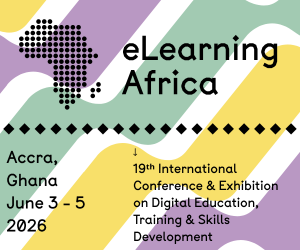ESSEC Business School Unveils the Results of the "Digital Disruption Matrix 2025"
 Cergy (F), April 2025 - The Digital Disruption Chair at ESSEC Business School has just published its first "Digital Disruption Matrix 2025," an innovative strategic tool that reveals the impact of six transformative digital technologies on eleven industry sectors. This in-depth analysis shows the impact of generative AI, with a disruption score of 89.45/100, nearly double that of the second-ranked technology.
Cergy (F), April 2025 - The Digital Disruption Chair at ESSEC Business School has just published its first "Digital Disruption Matrix 2025," an innovative strategic tool that reveals the impact of six transformative digital technologies on eleven industry sectors. This in-depth analysis shows the impact of generative AI, with a disruption score of 89.45/100, nearly double that of the second-ranked technology.
The aim of this annual barometer is to understand the impact of each technology by sector and to ensure comparability between sectors and between years. This matrix provides an objective reference framework for tracking the evolution of technological disruptions over time.
The six technologies analyzed were selected by a panel of 40 experts from the academic and professional worlds. The scores were established based on the volume and trend of academic publications, the number of patents filed, and the average number of citations per publication.
- Generative AI: 89.45/100 - The most disruptive technology in the study despite its relatively recent emergence.
- Descriptive AI: 49.04/100 - The fundamental backbone of technologies, dominant in terms of academic publications and patent filings.
- Renewable Energies and Storage: 40.42/100 - This technology maintains its position with a strong volume, ahigh citation rate, and a major intersectoral impact.
- Quantum Computing: 32.47/100 - This cutting-edge technology, sometimes misunderstood, is seen as a vector for future transformation.
- Robotics and Automation: 19.63/100 - It benefits from the increased accessibility of AI and is viewed to offload low-value daily tasks.
- Blockchain: 12.04/100 - With stable publication and citation volumes over time, its real impact remains below the expectations of professionals, despite the recent resurgence of interest in cryptocurrencies.
"A paradox revealed by our study is that despite the spectacular rise of generative AI, it has not yet reached the impact of renewable technologies, and both remain far from the implementation levels of traditional AI. The analysis of volume, trends, and impact allows us to put the media frenzy surrounding certain technologies into perspective," notes Jan Ondrus, Professor of Information Systems and Chairholder of the Digital Disruption Chair at ESSEC.
This is the first time that a study of this scope analyzes the combination of over 300 global professional publications and all scientific articles and patents published in the last five years. It also gathers the perceptions of 1,000 professionals from all over the world.
"By combining the analysis of extensive scientific data, rarely studied together, with insights from field professionals, we offer an objective mapping of technological transformations. Our ambition is to take a step back from trends and to the debate around current trends by providing a long-term perspective centered on a crucial question: what is the real value and impact for each sector? This first edition lays the groundwork for a tool that will be enriched annually, allowing us to track the evolution of disruptions across the economy," explains Jérémy Beaufils, Executive Director of the Digital Disruption Chair at ESSEC.
The Digital Disruption Matrix is supported by the L'Atelier BNP Paribas, which shares data on patents and academic publications and by SIA, which shares its AI technologies and the expertise of its consultants.









